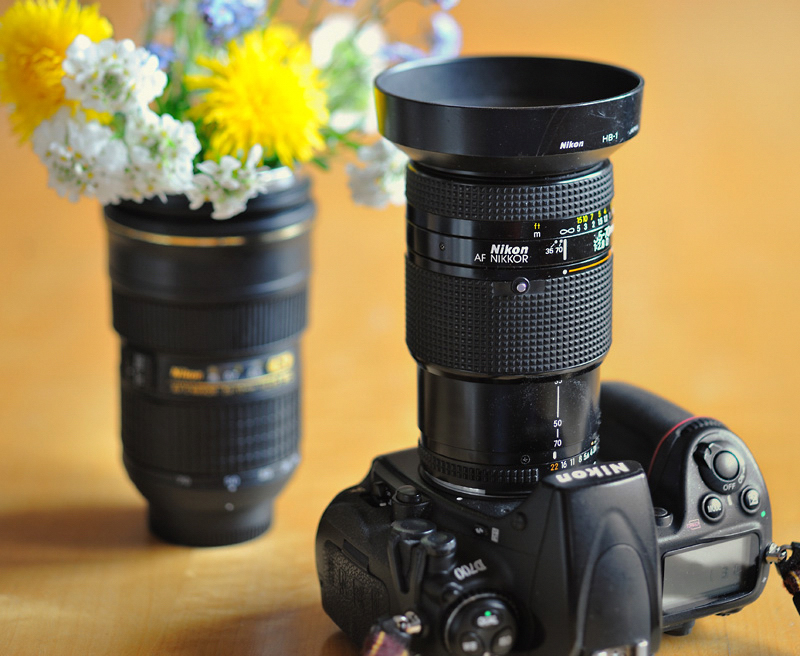
Nikon introduced this lens in 1987 as their first professional autofocus normal zoom. In the middle of the 90s they updated it with a 'D' chip, combined with a minor facelift. But the optical design remained the same. It was built until about 2007.
Over the years I have used two samples of this lens with consistent results. I tried a third one - a non-D type in heavy used condition - but that was a bad sample. I don't count this here.
I use the 35-70mm as a standard lens. I don't really know why, but this lens has been my all-time preferred one for photographing steam locomotives, too.

|
|
The 35-70mm f/2.8 at 35mm mounted on a D700. In the background: Nikon's current professional normal zoom, the AF-S 24-70 f/2.8 G, specially modified for flower photography ;o). |

|
|
At closest focus and 70mm the lens reaches its maximum magnification of about 1:6.7. The distance between the lens hood and the subject is 39cm. |

|
|
In conjunction with the 6T closeup lens the max. magnification is about 1:3 and the distance between hood and subject is about 17cm. Both shots were made with the D700 at f/2.8 and 1/100sec hand-held. |

|
|
Colours of autumn. D700, 35mm, F11. |

|
|
Special train, just arrived in Rheine main station. D200 on a tripod, 62mm, F5.6, 2.5sec. |

|
|
Creating a larger soap bubble, "Phaeno", Wolfsburg. D700, 44mm, F4. |

|
|
Evaluating corner sharpness @70mm, see 100% crop below. This shot was made hand-held with the Nikon D700 at ISO 400, F8 and 1/60sec. No post-processing was done, the image is just raw converted by Nikon Capture NX2. |

|
|
100% crop of the upper left corner. |

|
|
Evaluating corner sharpness @35mm, see 100% crop below. This shot was made hand-held with the Nikon D700 at ISO 400, F11 and 1/160sec. |

|
|
100% crop of the lower left corner. |

|
|
The flaring issue: if a bright light source is just outside the frame the 35-70mm is very prone to flare. Often you can help yourself a bit by using your left hand for shading, but I forgot it here. This image was captured with the D700, lens at 50mm and F8. |

|
|
In contrast, if you have the sun in the image, there is no problem. D700, 35mm, F4. |